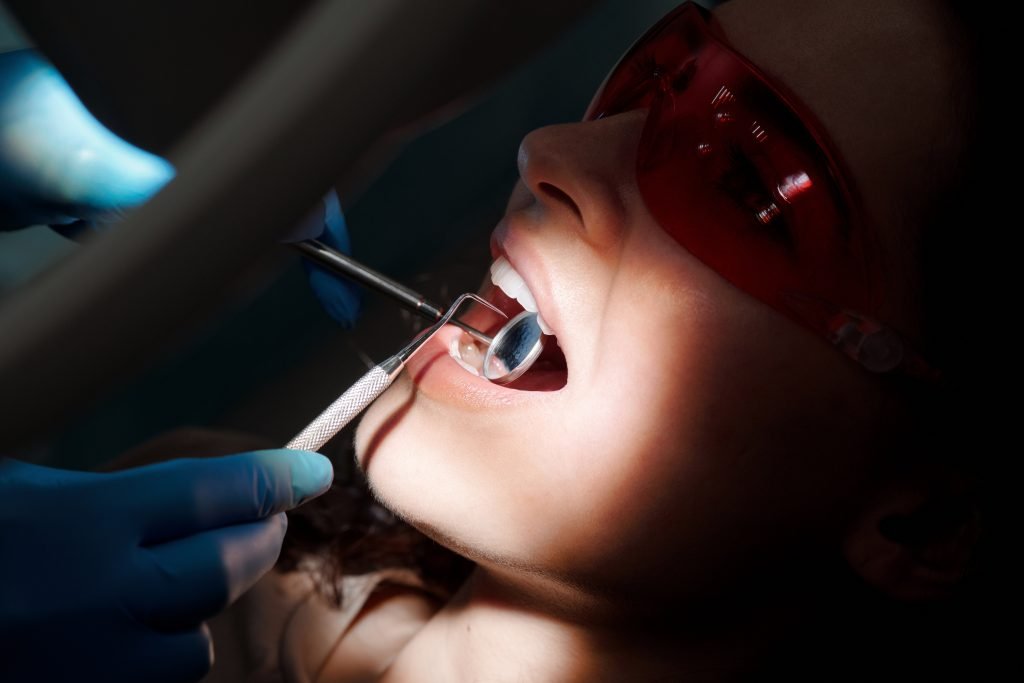Cavities are the one thing we all wish to avoid when visiting the dentist. The mere mention of the word frightens many. Imaginations of numbing injections and dental drills spring to mind. Hearing that you require dental treatment is never a pleasant experience. Panic of dental procedures causes many people to ignore the possibility of decayed areas on their teeth.
Often we don’t even notice we have a cavity in our mouths!
And that is why knowing how to tell if you have a cavity is vital.
The good news is that cavities can be easily treated if they are discovered early on. But if cavities are left untreated, they can lead to more serious oral health issues like toothaches and maybe even complete tooth loss. Therefore, cavity detection and treatment are best left to a skilled dentist.
But how do you know when to visit the dentist? However, if you notice any of the following symptoms, you should immediately make an appointment with your dentist.
Why Do Cavities Occur?
Plaque is a film of germs that forms on your teeth due to eating, drinking, and swishing your saliva. Brushing, flossing, and frequent dental visits may help eradicate it. Cavities form when bacteria in your mouth hardens on the surface of your teeth. When bacteria and acids attack the tooth, they may cause cavities. Dental decay may progress to the pulp if left untreated, resulting in tooth loss.
Every Cavity is Unique
It takes time for cavities to develop. In some instances, it might take months or years for a tooth to become decayed enough to need treatment. The time it takes varies depending on the state of your mouth. So a cavity might start to emerge but not grow further. Delay in forming a cavity enables your dentist to treat it before it worsens.
How to Tell if You Have a Cavity?

The presence of cavities might cause your mouth to feel like it’s in a state of complete chaos. On the other hand, you may not have any symptoms, and your cavity may go undetected for an extended period. If you suspect you may have a cavity, here are some warning signs to look out for before visiting your local dental clinic.
Throbbing Toothache
A cavity in the tooth is one of the most prevalent reasons for a toothache. In addition, an unexpected toothache with no other changes in your oral health might be caused by a cavity.
Inflamed nerves and tissues within the tooth and gums cause toothache. While toothaches might indicate other conditions like an infection or food lodged in your gums, they are often caused by cavities.
As cavities penetrate your enamel, they reach the dentin underneath. Unresolved cavities may spread into your teeth’ live tissue and cells, causing severe pain.
Visible Hole or Pit on Your Tooth
In the early stages of a cavity, your teeth may be stained yellow, black, or white. As cavities usually begin on the tooth’s surface.
Isn’t that worrying? That implies you may be able to detect a cavity even before it causes significant harm.
Nonetheless, if the erosion continues to worsen, your tooth will begin to decay and produce a pit or hole. Cavities may be detected by pits and changes in the tooth’s shape. Check the surface of the enamel for tiny brown or black holes.
Intolerance to Hot And Cold Food And Drink
When you eat or drink anything hot or cold, and your teeth feel sensitive, you probably have a cavity. This is one of the most prevalent signs. Yet, incredibly, you may have a cavity and not feel any discomfort when chewing until you consume particular foods.
Just below the enamel lies a layer of tissue called dentin. The dentin is exposed when the enamel peels away. Hot or cold food activates nerves and cells in the dentin, causing sensitivity and pain.
This sensation may last seconds or minutes after eating or drinking. As a result, it might not be easy to appreciate your favorite dishes.
Unpleasant Breath And Peculiar Taste
There is nothing worse than foul breath (also known as halitosis), yet cleaning your teeth isn’t always enough. If brushing and mouthwash don’t seem to help, you may have a cavity or two.
When you have a cavity, bacteria surrounds the tooth. The bacteria that causes tooth decay may also produce foul breath. The bacterium spreads to your tongue, leaving an unpleasant taste when you brush.
The smell and taste are difficult to conceal, humiliating if noticed.
Warning Signs: Bleeding, Swollen Gums, And Pus
Cavities aren’t all the same. Some of them settled along the gum line, causing discomfort in the gums.
Make an appointment with your dentist if your gums are puffy or bleeding while brushing or flossing. It’s probably a cavity, but it may be gingivitis! Regular dental visits will spot the condition before it worsens.
If pus appears near a tooth or teeth, it is too late. It’s an abscess that requires immediate attention. The abscess collects and drains pus, producing considerable agony. This may cause severe pain and gland swelling.
Breaks or Chips Are Present
When you bite down on anything hard, your teeth might be chipped or broken, which could result from an existing cavity in the tooth. Get treatment to prevent the tooth from entirely breaking as soon as possible.
Pain While Chewing And Biting
You may have a cavity or a broken tooth if you experience discomfort when chewing. This is because chewing puts pressure on the tooth and its pulp.
If the region becomes inflamed or infected, pressing on that tooth will cause moderate to severe discomfort. On the other hand, maybe you can chew on the opposite side of your mouth and eat without feeling any pain or difficulty.
Conclusion
Now since you know how to tell if you have a cavity, pay special attention to the inside of your mouth and teeth. The importance of routine dental care cannot be overstated. While excellent dental hygiene, a nutritious diet, and frequent cleanings may help prevent the development of cavities, they are not a failsafe method of preventing tooth decay. In addition, it is possible to develop a cavity at any age, regardless of your gender.

